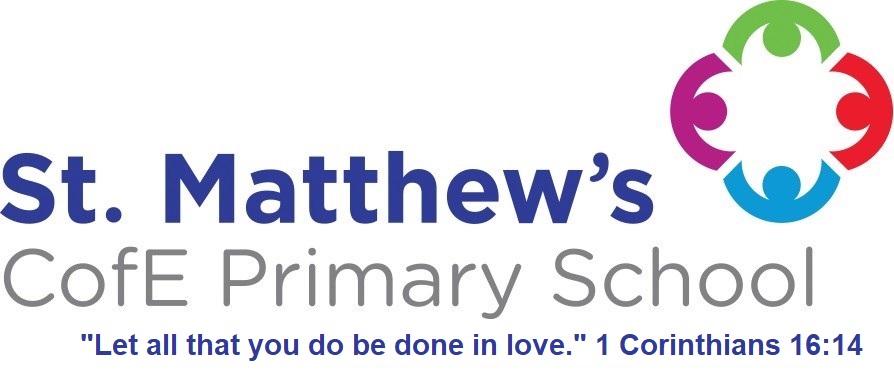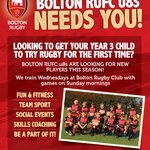Welcome to our English page
At St Matthew's Primary School, we believe that English should be at the heart of all aspects of school life. It is our priority to ensure our children will develop a love of English, appreciate and enjoy the written word, have the ability to write freely and fluently about experiences (real and imagined) and express themselves clearly and confidently. Alongside this, we strive for children to become life-long readers who can seek out appropriate, challenging books to bring them pleasure and to further their understanding of the world.
English is a core subject in the National Curriculum. When implementing the statutory requirements of the programme of study for English, we use an agreed teaching sequence based upon the Pathways approach for reading and writing. The Pathways scheme uses a mastery approach for teaching reading and writing, based upon the principles of how children learn. Units of work are delivered using high quality texts and children in all year groups are given varied opportunities for reading and writing. Skills are built up through repetition within the units, and children apply these skills in the activities provided. The chosen text stimuli for each unit enables children to imitate the language they need for a particular topic orally before reading and analysing it and then writing their own version. Therefore, children have regular opportunities to develop their vocabulary, speaking and listening and handwriting skills alongside the fundamental focus on writing and reading. Prior to the use of the Pathways schemes, we use the Read Write Inc scheme for learning to read. Please see below for the specifics of our lessons for each year group. If you would like any further information, please contact the school office.
Read Write Inc (RWI)
In EYFS and KS1, children follow the Read, Write Inc scheme (RWI) until they have successfully completed this and are able to efficiently decode all 44 common sounds in the English language. Read Write Inc. Phonics is a comprehensive literacy programme, weaving decoding, comprehension, writing and spelling together seamlessly. Fidelity to the teaching programme, rigorous assessment, tracking and one-to-one tutoring ensure that schools guarantee progress for every child. Once children become confident and fluent readers, they progress onto the St. Matthew's Pathways to Read and Write curriculum, which covers all aspects of the National Curriculum for English and is steeped in high quality texts which reflect the diverse community we serve.
Click the image below to enter the Ruth Miskin website to find out more information and tutorials on how to support your child learning.
Click the image below to enter the Oxford Owl website.
Read Write Inc.
Pathways to Read:
Pathways to Read is a programme designed to equip pupils from Year 2 onwards with key skills to move them through the reading process towards becoming competent and fluent readers. To support this approach, clear detailed lesson plans and resources are linked to high-quality texts. Pathways to Read ensures engaging and purposeful reading lessons. Each half termly unit is used thematically alongside Pathways to Write to ensure a clear focus across the whole English curriculum for each year group. This allows further opportunities for children to make meaningful connections across different fiction and non-fictions texts centred around one theme.
Within each Pathways to Read half-termly unit, there are four 30-minute whole class reading sessions per week:
- Session 1, whole class reading: predict, clarify vocabulary and modelling fluency.
- Session 2, whole class reading: retrieve, explain and practising fluency. Within this session, pupils will also practise a mastery skill e.g. summarise, infer, identify themes or discuss words and phrases chosen by the author.
- Session 3, independent reading: summarise, strategy check, independent reading and discussion. A short time will be spent on summarise and strategy check, and a longer time should be given to independent reading and discussion. Like session 2, pupils will answer questions linked to the mastery skill.
- Session 4, follow-on task: this session allows for pupils to put the mastery skills that they have learnt into practice. The task may be taught and modelled to a whole class.
Pathways to Read
Pathways to Write:
We also use Pathways to Write to drive our writing curriculum. This aligns with Pathways to Read ensuring meaningful links for our pupils with texts and topics that are used across Literacy, Humanities and Science. This is designed to equip pupils with key skills to move them through the writing process towards their final outcome. This ensures engaging and purposeful English lessons with 5 daily 1-hour English lessons. It is built around units of work that follow a mastery approach to the teaching of writing. Units of work are delivered using high quality texts and children in all year groups are given varied opportunities for writing. Skills are built up through repetition within the units, and children apply these skills in the writing activities provided. Many opportunities for widening children’s vocabulary are given through the Pathways to Write approach and this builds on the extensive work we do in school to provide our children with a rich and varied vocabulary.
You will find the end of year expectations for writing, reading and spoken language for each of our year groups in the attached documents. For further details on the skills that your children are learning on a termly basis, please contact your class teacher.
Pathways to Write
Pathways to Read, Write & Poetry Overview:
Please see our curriculum overview for across the school (Year 1-6) below which shares the high-quality texts and writing outcomes for each half term.
Our '5 Reads':
Each half term, every year group, from Year 1 to 6, has a set of 5 picture books to focus on in their daily story time. These are read alongside their longer class novel reads to provide the children with an ever expanding range of books and authors to engage and interest them in reading for pleasure. Check out our class pages to see what each year group is reading this half term.


.jpg)
_page-0001.jpg)
_page-0001_(1).jpg)

.png)

.png)